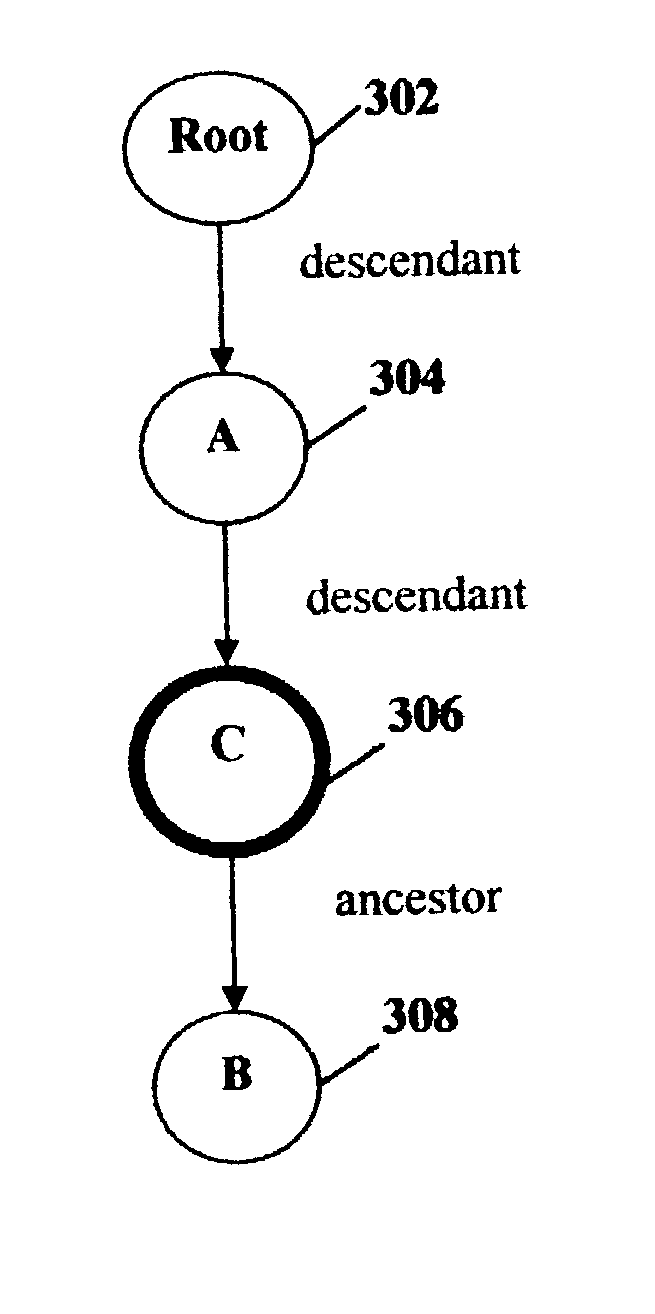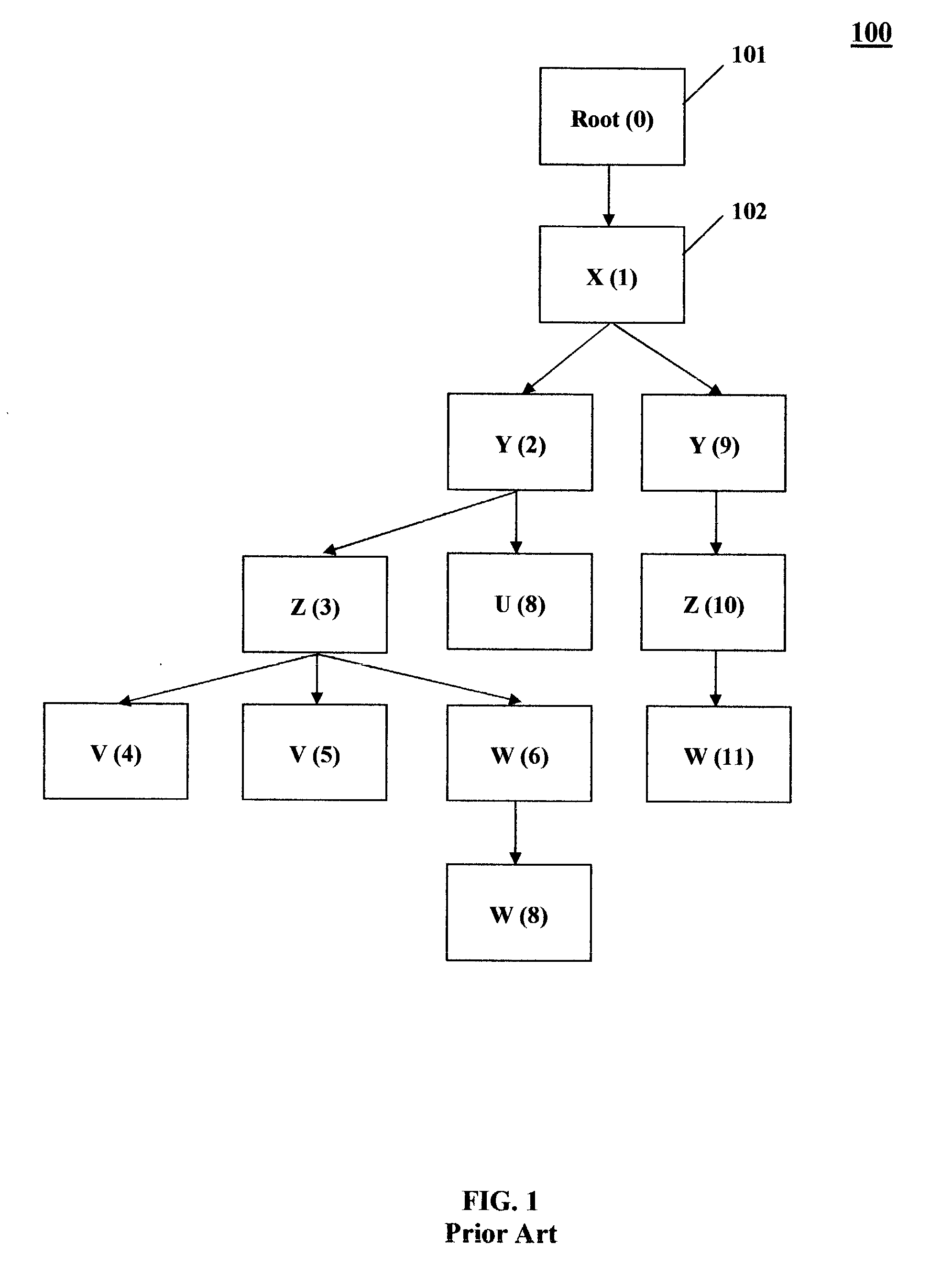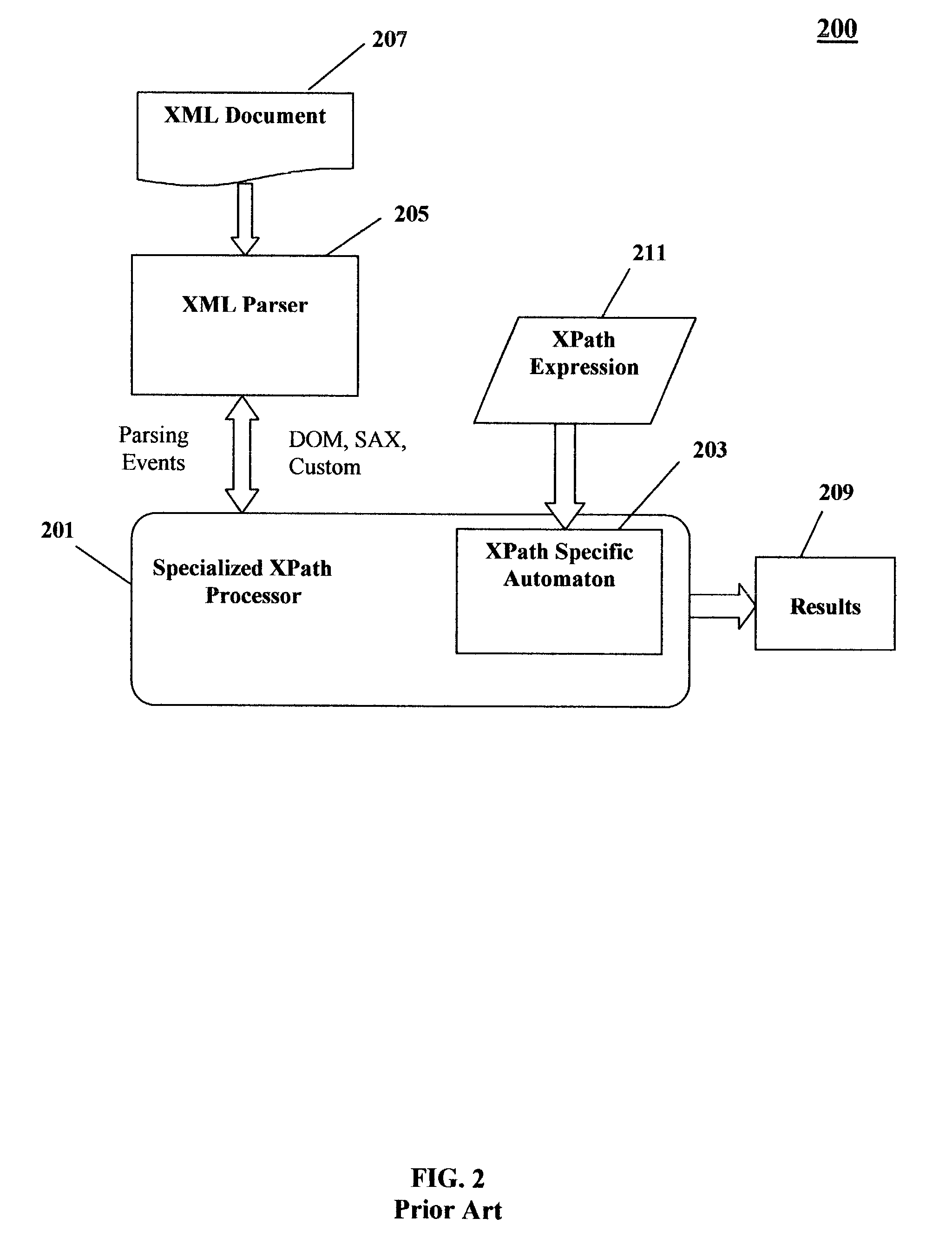Method for streaming XPath processing with forward and backward axes
a technology of forward and backward axes and processing methods, applied in data processing applications, instruments, computing, etc., can solve problems such as unacceptable overhead, done on expressions that contain only forward axes, xml documents,
- Summary
- Abstract
- Description
- Claims
- Application Information
AI Technical Summary
Problems solved by technology
Method used
Image
Examples
Embodiment Construction
[0039] FIGS. 3A, 3B, and 3C--XPath Expression, Tree Representation, and DAG Representation of XML Document
[0040] Suppose we have a tree in which every node is labeled with a tag (where the same tag may appear on more than one node). Consider the problem of finding all nodes labeled C in the tree such that these nodes have both an ancestor labeled A and an ancestor labeled B. This corresponds to the XPath expression shown in FIG. 3A: / descendant::A / descendant::C[ancestor::B], labeled 301. A tree representation of this expression is provided in FIG. 3B and a directed acyclic graph (DAG) version is provided in FIG. 3C, with nodes labeled 302, 304, 306, and 308.
[0041] FIG. 4--Tree Representation of an XML Document
[0042] For example, consider the tree shown in FIG. 4. Consider the two nodes 404 and 406, both of which are labeled C. The node 404 has an ancestor 403 labeled B but no ancestor labeled A. Consequently node 404 does not satisfy the requirement. But node 406, on the other hand,...
PUM
 Login to View More
Login to View More Abstract
Description
Claims
Application Information
 Login to View More
Login to View More - R&D
- Intellectual Property
- Life Sciences
- Materials
- Tech Scout
- Unparalleled Data Quality
- Higher Quality Content
- 60% Fewer Hallucinations
Browse by: Latest US Patents, China's latest patents, Technical Efficacy Thesaurus, Application Domain, Technology Topic, Popular Technical Reports.
© 2025 PatSnap. All rights reserved.Legal|Privacy policy|Modern Slavery Act Transparency Statement|Sitemap|About US| Contact US: help@patsnap.com



